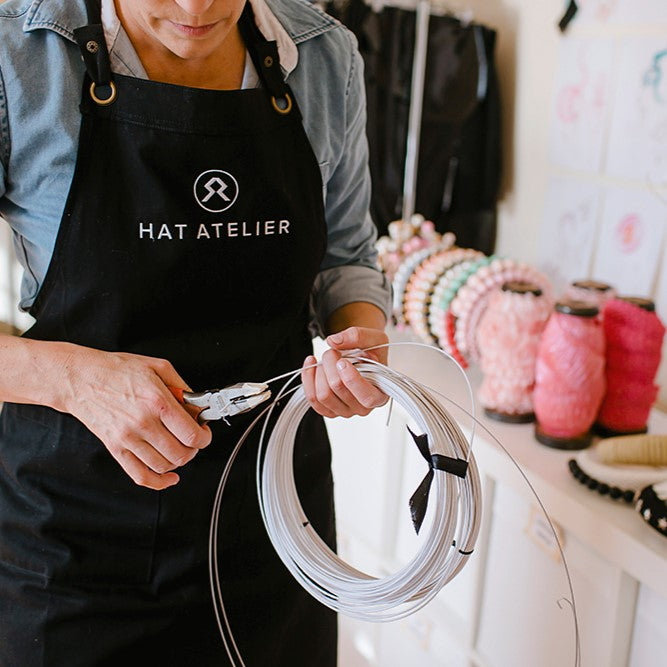An Introduction into Millinery Wire:
Millinery wire is recognized as one of the basic types of tools or pieces of equipment used in hat-making, and the wore itself has a number and multitude of uses. Millinery wire comes, ready to use, in a range of sizes and differential materials, so entirely understanding what type of wire to use for a specific style of hat or particular project may be pretty confusing when you first begin your millinery journey. The millinery academy at Rebecca Share Millinery is here to share our expertise and understanding about millinery wire, seeking to assist all other hat makers and milliners in properly using this essential hat crafting tool.
What exactly is millinery wire used for?
Wire, which is one of the most critical material pieces needed to create a hat, is utilized within the practice of millinery to ultimately make the shape of the hat, strengthen and support the overall hat brim, and construct the frame of the entire cap. Beyond crafting and forming the brim of a hat, millinery wire can be utilized to create flamboyant frameworks for differential headpieces, provide decorative feathers with a floating appearance, or even act as a stem for handmade flower pieces. Milliners also can wrap the wire with tulle or a portion of different fabrics to match a specific design or even provide the wire with a particular foundation that can be utilized for sewing purposes.
What kind of wire is best to use for millinery work?
The particular type and size of millinery wire that you will want to utilize will entirely depend on the kind of project that you are working on or will need to use the wire for. Let’s take a closer look at the different types of millinery wire:
- Standard Millinery Wire: This wire is directly crafted from galvanized steel covered by either rayon, cotton, or paper. It comes in various gauges, 19, 16 and 14 gauge. 14 gauge is the hardest, strongest of the gauges and a favored Millinery wire used by Rebecca Share in some of her developed techniques.
- Transparent Polypropylene: This type of wire can also be regarded as a brim reed. Brim reed is a type of memory wire that provides hats with a more flexible brim and overall shape.
- Steel Spring Wire: This is another kind of memory wire, meaning that it also can provide a flexible brim, creating an adaptable hat shape.
Should milliners use a wire covered with rayon or cotton?
Millinery wire that is covered in cotton is available in only two colors: black and white. However, it can be easily colored with the use of permanent fabric markers or ink markers. Rayon-covered millinery wires have the ability to take on a dye incredibly well, making it a piece of material that can be easily matched to any other hue of hat-making material. The only downfall that is attached to rayon-covered millinery is that it is costly. In comparison, cotton-covered millinery wire will be more cost-effective for milliners to utilize within a variety of broad usage practices within the art form of millinery itself.




